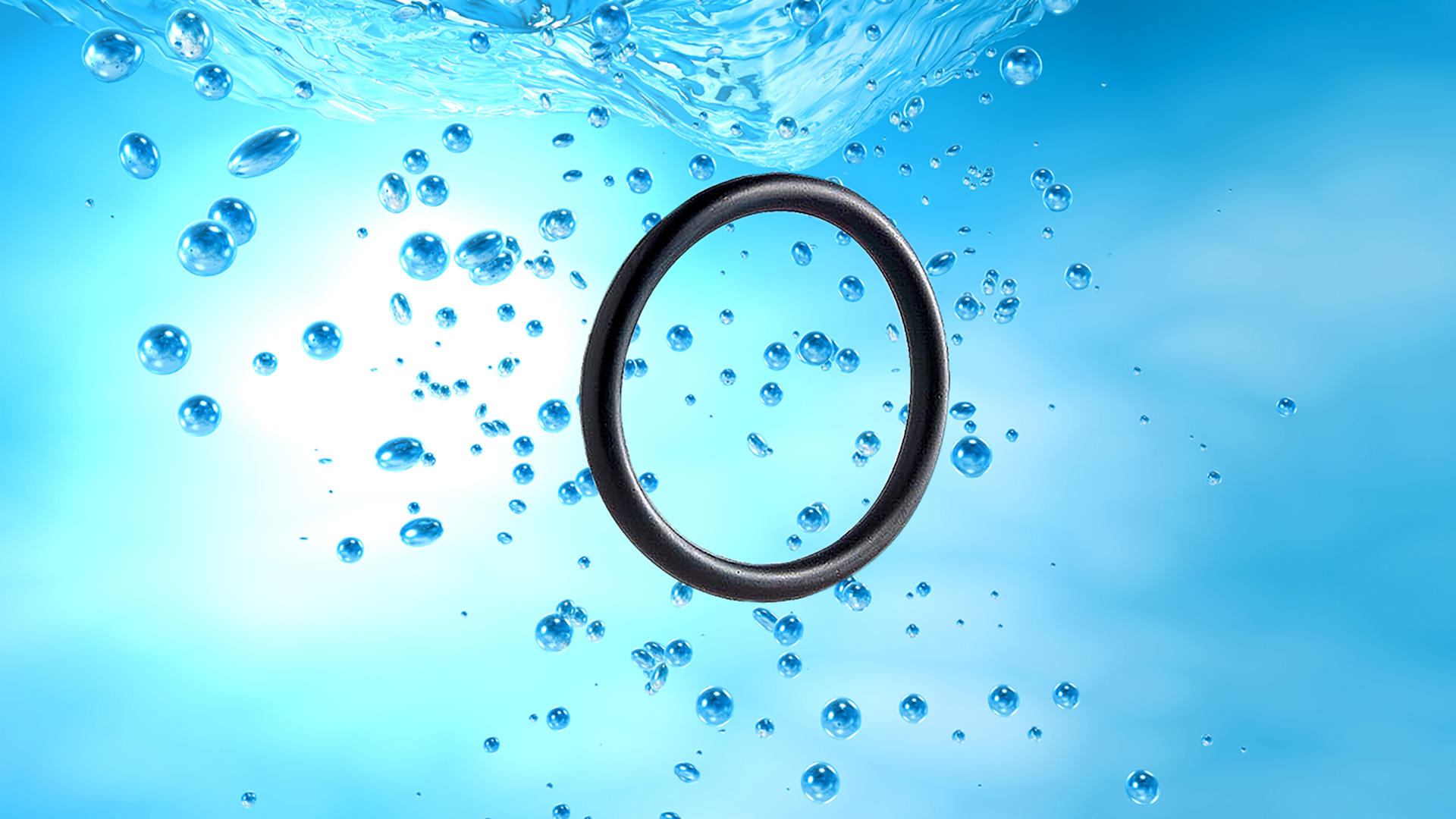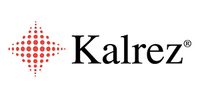What is an elastomer
Though "elastomer" is synonymous with "rubber", it is more formally a polymer that can be modified to a state exhibiting little plastic flow and quick or nearly complete recovery from an extending force, and upon immediate release of the stress, will return to approximately its own shape. According to the definition of the American Society for Testing and Materials (ASTM) for the term "elastomer" it is essential that: *An elastomer part must not break when stretched approximately 100%. *After being stretched 100%, held for 5 minutes and then released, it must retract to within 10% of its original length within 5 minutes after release.
Resistance to the media
As used throughout this manual, the term "media" denotes the substance retained by the o-ring. It may be a liquid, a gas, or a mixture of both. It can even include powders or solids as well. The chemical effect of the media on the O-ring is of prime importance. It must not alter the operational characteristics or reduce the life expectancy of the O-ring. Excessive deterioration of the O-ring must be avoided. It is easy, however, to be misled on this point. A significant amount of volume shrinkage usually results in premature leakage of any O-ring seal, whether static or dynamic. On the other hand, a compound that swells excessively, or develops a large increase or decrease in hardness, tensile strength, or elongation, will often continue to serve well for a long time as a static seal, in spite of undesirable test results on elastomer compounds. The first step in selecting the correct material is to select an elastomer that is compatible with the chemical environment.
Compound
A compound is a mixture of base polymer(s) and other chemicals which form a finished rubber material. More precisely, the term 'compound' refers to a specific blend of ingredients tailored for particular characteristics required to optimize performance in some specific service. The basis of compound design is selection of the polymer type. To the elastomer, the compounder may add reinforcing agents, such as carbon black, colored pigments, curing or vulcanizing agents, activators, plasticizers, accelerators, anti-oxidants or antiradiation addiditives. There may be hundreds of such combinations.
The physics of Rubber
Rubber is composed of long chains of randomly oriented molecules. These long chains are subject to entanglement and cross-linking. The entanglement has a significant impact on the viscoelastic properties such as stress relaxation. When a rubber is exposed to stress or strain energy, internal rearrangements such as rotation and extension of the polymer chains occur. These changes occur as a function of the energy applied, the duration and rate of application, as well as the temperature at which the energy is applied. ISO 1629 identifies approximately 25 elastomeric types.
Plus d'information concernant la selection des élastomères
Si vous desirez plus d'information concernant la selection des élastomères, remplir le formulaire ci-dessous ou contacter la location d'ERIKS Sealing & Polymer le plus proche.
| Élastomère ASTM | NBR Nitrile | EPON | CR Néoprène | VMQ Silicone | FVMQ Silicone fluoré | EU Uréthane | FKM CarboneFluoré | FFKM Carboneperfluoré | PTFE-FEP encapsulé |
|---|---|---|---|---|---|---|---|---|---|
| GENERAL | |||||||||
| Dureté (Shore « A ») 1 | 20/ 90 | 30/90 | 15/95 | 20/90 | 35/80 | 60/95 | 50/95 | 65/90 | - |
| Plage de temp. °F/°C max. 1 | 230/110 | 266/130 | 248/120 | 446/230 | 446/230 | 176/80 | 410/210 | 620/326 | 400/205 |
| Plage de temp. °F/°C min. 1 | -30/-35 | -67/-55 | -49/-45 | -67/-55 | -76/-60 | -22/-30 | 5/-15 | -58/504 | -76/-605 |
| Élasticité rémanente 2 | B | C | C | A | B | E | C | B | E |
| Résistance à l'abrasion 2 | C | C | C | E | E | A | C | C | E |
| Perméabilité aux gaz 2 | C | C | C | E | E | B | C | C | E |
| Air | E | B | C | A | B | C | B | A | + |
| Alcools | B | A | B | B | B | U | E | A | + |
| Aldéhydes | U | B | U | C | U | U | U | Bfi | + |
| Hydrocarbonés Aliphatiques | C | U | E | E | A | C | A | A | + |
| Alkalis | B | A | C | B | B | B | C | A | + |
| Amines | B1 | B1 | B1 | E1 | B1 | U | U | Bfi | + |
| Graisses animales | B | U | C | C | A | C | B | A | + |
| Hydrocarbonés Aromatiques | D | U | D | U | B | D | A | A | + |
| Esters, Alkyl Phosphate (Skydrol) | U | B | U | C | U | U | U | A | + |
| Esters, Aryl Phosphate | U | A | U | C | B | U | A | A | + |
| Esters, Silicate | C | U | E | U | B | U | A | A | + |
| Éthers | U | E | U | U | E | E | U | A | + |
| Hydrocarbones halogénés | U | U | U | U | B | E | A | A | + |
| Acides Inorganiques | E | C | B | B | B | U | A | A | + |
| Cétones | U | A | A | C | A | U | U | B | + |
| Huiles minérales, graisses haut taux d'anilyne | B | U | C | C | B | A | A | A | + |
| Huiles minérales, graisses à bas taux d'anilyne | B | U | U | E | B | B | A | A | + |
| Acides Organiques | C | C | C | B | B | U | C | A | + |
| Huiles silicones | A | A2 | A | E | E | A | A | A | + |
| Huiles végétales | A | U | C | B | B | E | A | A | + |
| Eau / Vapeur | C | A | E | E | E | U | B. | C4 | + |
- La plage de température est fortement dépendante du mélange utilisé;
- L'élasticité rémanente pour le Kalrez® dépend de la température. Pour des applications à basse température cette valeur est raisonnable : pour les hautes températures cette valeur est bonne à très bonne.
| A | Excellent |
| B | Bon |
| C | Assez bon |
| D | Faible |
| E | Douteux |
| U | Instatisfaisant |
| 1 | Voir "compound selection for chemical and fluids" |
| 2 | EPDM/EPR possibilité rétrécissement |
| 3 | Dépendant du type de FKM |
| 4 | Dépendant du mélange |
| 5 | Dépendant de la qualité du noyau |
| + | En général "A" du á l'encapsulation FEP |
Si un mélange classé «B» doit être utilisé, ne jamais le (ré) utiliser après démontage. Il peut gonfler suffisamment que pour rendre tout (re) montage impossible et dangereux.
Si un mélange classé «C» est essayé, assurez-vous de le tester au préalable aux mêmes conditions de services. Il est aussi particulièrement important de tester un mélange aux mêmes conditions de travail si un acide fort doit assurer une étanchéité à hautes températures. La dégradation d'un caoutchouc à des températures élevées étant bien plus importante qu'à température ambiante.

















